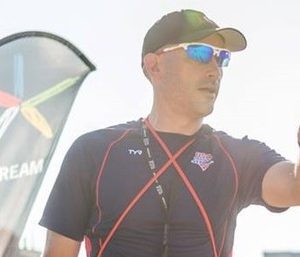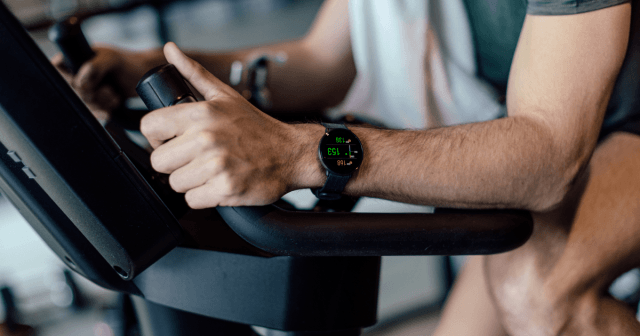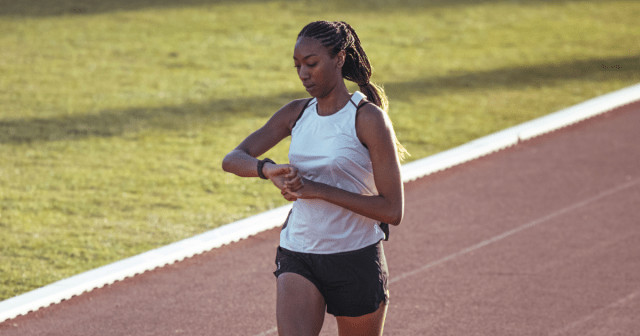As with any endurance sport, swimming is all about getting from start to finish as fast and efficiently as possible. Of course, this is easier said than done, and countless swimmers and triathletes have spent their careers optimizing their form and technique for this exact reason.
Swimming, especially the freestyle swimming stroke, is surprisingly complicated. Many of us have learned the basics before we entered elementary school, but for such a simple concept, it can take years to master.
Let’s break it down for a moment.
The freestyle swimming stroke consists of the:
- Catch phase: the swimmer’s hand breaks the surface of the water.
- Pull phase: the swimmer brings the arm down along the body.
- Exit: the hand finishes pulling and leaves the water.
- Recovery phase: the arm is brought back around through the air back to the catch phase.
Each of these four phases is equally important, but paired with proper breathing, kicking, rotation, and head position, a swimmer has a lot to keep in mind. With this, though, comes an opportunity to fine-tune your technique and ultimately gain an advantage over your competition.
Nobody knows this better than Greg Mueller. He’s a USA Triathlon, USA Cycling, USA Track and Field, and International Triathlon Union certified coach with decades of experience in the endurance industry. He’s worked with thousands of swimmers and triathletes, helping them to optimize their form and reach their goals ranging from simply finishing a triathlon to standing on top of the podium.
While there’s no one-size-fits-all solution for boosting efficiency, here Mueller provides smart, actionable tips on how to save energy through the freestyle stroke for both pool and open water swimmers — complete with sample drills and workouts, as well as metrics to monitor.
1. Pay Attention to your head position
Look for the black line and be aware of where your head and eyes are pointed. As your forehead goes up, your feet sink and your legs become an anchor.
A correction drill for this is swimming with a swim paddle on the crown of your head and breathing and stroking normally.
2. Extend your arms forward
The Polar Vantage V multisport watch counts and reports stroke rate so you can raise or lower your rating based on conditions or your goal.
It’s like throwing an anchor forward with a slight downward trajectory. Pool swimming requires a longer stroke and full-extension, while open water calls for higher turnover in order to overcome turbulence and waves. In general, you don’t want to lock your arm out but do get a good extension.
3. Mix Different types of pulls
Different pulls impact different energy systems. A higher stroke rate raises heart rate while a long strong catch uses far more muscle. The straight arm catch holds a lot of water but you can’t maintain that for long so it’s ideal to mix your catch depending on conditions.
4. Roll and rotate
Pool swimming will have a lot of roll and full extension while the open water swimmer has a bit less because the arms are moving faster which inhibits the hips from rolling.
If you’re in a pool or flat lake then go long, but if you’re in wavy conditions or swimming with people around you, then keep the turnover up so if your catch gets disrupted you can come back around quickly and catch more water.
5. Align the Timing Of Your Kick
A kick is a timing and comfort thing, and different swimmers use vastly different kicks. There are the standard two-, six- and eight-beat kicks. The eight beats are standard for fast sprinting and the two are more standard for longer events.
That said, different swimmers utilize all three at different times.
When starting, you want to get out fast and get open water, and when you finish you want to sprint — those both require an eight-beat kick. The important piece is to work on your timing so it aligns with your stroke timing.
Note that swimming stroke is all about the intention of speed. Your stroke rate and kick will increase or slow based on conditions and speed requirements.
6. Learn To breathe On Both Sides
Bilateral breathing with every three strokes is a good way to balance your muscles and allows you to see the competition on both sides of you. It also helps stave off injury.
It will take a while to get used to breathing on both sides, but HR can help you. If you track your average HR for each set and compare the same set and HR as time goes on, you can look for greater efficiency or lower HR at the same effort or speed.
7. Practice proper freestyle swimming form
Sculling works to teach a feel for the water, doggy paddle teaches catch, superman drills teach good sighting and single-arm drills teach maintenance of good body position.
8. Maximize your freestyle swimming efficiency
You can monitor stroke rate and heart rate with Polar Vantage V — these two things define efficiency.
Swim at the same perceived exertion on the same leave time and count your strokes. Then compare your time for each workout.
For 10 x 100 drills, use your lowest stroke rate possible and leave on 1:40. Don’t change the distance or leave time, just look for lower heart rate, faster times, or reduced stroke counts.
A speed workout would be 10 x 50 with the best effort on 60 seconds and compare time and heart rate after the last effort. You’re seeking faster times with a lower heart rate.
Lastly, do a long time trial, like 1500 meters straight, and record every 500 meters to understand pacing and get heart rate as soon as you stop. You can use the lap function button on your Polar Vantage V to get splits and get heart as soon as you’re done.
9. Consider using these tools for swimmers
Paddles
Use paddles for strength, not speed! Keep an eye on good form so you don’t injure your shoulder.
A buoy
Use a buoy to rest your legs, not to go faster. Use it with a purpose like to focus on drills or your catch. When people use a buoy but still kick, it defeats the purpose.
An ankle band
You can use an ankle band to work on your body position and teach yourself how to ‘press’ your chest forward and get your legs up so you’re faster.
If you liked this post, don’t forget to share so that others can find it, too.
Or give it a thumbs up!
I like this article
Please note that the information provided in the Polar Blog articles cannot replace individual advice from health professionals. Please consult your physician before starting a new fitness program.






